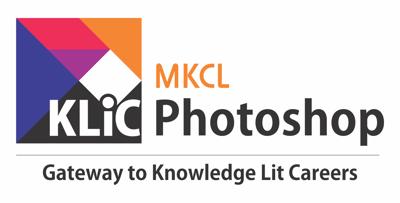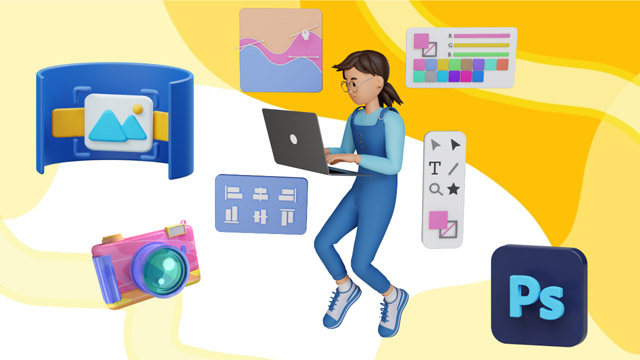- In this course, you will learn to:
- Classify different types of raw files and their respective features and limitations
- Explain the benefits of shooting in raw format compared to JPEG
- Identify the steps involved in importing and processing raw images in editing software
- Explore advanced raw editing techniques for optimal image quality
- Identify the benefits of batch processing and automation in raw file editing
- Explain specialized editing techniques for various types of photography such as landscape, portrait, and product
- Compare traditional photo editing methods with HDR techniques for achieving high dynamic range
- Analyze the process and outcomes of specialized editing case studies
- Demonstrate the operation of different tools within editing software to maximize the impact of raw files
- Assess the images using advanced editing techniques to address specific challenges like high ISO noise
- Recognize the best practices in creating HDR images, from capturing to editing
- Identify different editing techniques and choose the most effective based on the scenario
- Examine strategies for cleaning and enhancing product photographs for commercial use
- Differentiate between editing methods for print and web, ensuring optimal results for each medium
- Construct comprehensive editing strategies that incorporate a range of techniques and tools for diverse photographic scenarios

Photo Restoration Methods
Restore old and damaged photographs using digital tools, improving clarity, color, and overall quality.
Introduction
What you'll learn ?
- At the end of this course, learners will be able to:
- Review raw file types detailing features and limitations
- Interpret benefits of raw format over JPEG emphasizing post-processing advantages
- Identify steps for importing and processing raw images in editing software
- Make use of advanced raw editing techniques to enhance image quality
- Interpret batch processing and automation advantages in raw editing workflows
- Compare traditional editing and HDR techniques for dynamic range improvement
- Report outcomes from specialized editing technique applications in case studies
- Examine tool use within editing software to optimize raw images for enhanced quality and visual impact
- Identify images with advanced techniques to correct high ISO noise
- Formulate best practices for HDR image creation from capture to editing
- Examine strategies for enhancing commercial quality product photographs
- Compare editing methods for print versus web for optimal result
- Construct comprehensive strategies incorporating diverse techniques for varied contexts
Certification
- KLiC courses are recognised by Yashwantrao Chavan Maharashtra Open University (YCMOU).
- MKCL provides certificate to the KLiC learner after his/her successful course completion.
- Yashwantrao Chavan Maharashtra Open University (YCMOU) provides mark sheet to successfully passed KLiC learners (Jurisdiction: Maharashtra).
Academic Approach
The academic approach of the courses focuses on the “work-centric” education i.e. begin with work (and not from a book!), derive knowledge from work and apply that knowledge to make the work more wholesome, useful and delightful. The ultimate objective is to empower the Learner to engage in socially useful and productive work. It aims at leading the learner to his/her rewarding career as an employee or entrepreneur as well as development of the community to which s/he belongs. Learning methodology:
- Step -1: Learners are given an overview of the course and its connection to life and work.
- Step -2: Learners are exposed to the specific tool(s) used in the course through the various real-life applications of the tool(s).
- Step -3: Learners are acquainted with the careers and the hierarchy of roles they can perform at workplaces after attaining increasing levels of mastery over the tool(s).
- Step -4: Learners are acquainted with the architecture of the tool or tool map so as to appreciate various parts of the tool, their functions, utility and inter-relations.
- Step -5: Learners are exposed to simple application development methodology by using the tool at the beginner’s level.
- Step -6: Learners perform the differential skills related to the use of the tool to improve the given ready-made industry-standard outputs.
- Step -7: Learners are engaged in appreciation of real-life case studies developed by the experts.
- Step -8: Learners are encouraged to proceed from appreciation to imitation of the experts.
- Step -9: After the imitation experience, they are required to improve the expert’s outputs so that they proceed from mere imitation to emulation.
- Step-10: Emulation is taken a level further from working with differential skills towards the visualization and creation of a complete output according to the requirements provided. (Long Assignments)
- Step-11: Understanding the requirements, communicating one’s own thoughts and presenting are important skills required in facing an interview for securing a work order/job. For instilling these skills, learners are presented with various subject-specific technical as well as HR-oriented questions and encouraged to answer them.
- Step-12: Finally, they develop the integral skills involving optimal methods and best practices to produce useful outputs right from scratch, publish them in their ePortfolio and thereby proceed from emulation to self-expression, from self-expression to self-confidence and from self-confidence to self-reliance and self-esteem!
Syllabus
Evaluation Pattern
Evaluation Pattern of KLiC Courses consists of 4 Sections as per below table:
| Section No. | Section Name | Total Marks | Minimum Passing Marks |
|---|---|---|---|
| 1 | Learning Progression | 25 | 10 |
| 2 | Internal Assessment | 25 | 10 |
| 3 | Final Online Examination | 50 | 20 |
| Total | 100 | 40 | |
| 4 | SUPWs (Socially Useful and Productive Work in form of Assignments) | 5 Assignments | 2 Assignments to be Completed & Uploaded |
YCMOU Mark Sheet
Printed Mark Sheet will be issued by YCMOU on successful completion of Section 1, Section 2 and Section 3 and will be delivered to the learner by MKCL.
YCMOU Mark Sheet will be available only for Maharashtra jurisdiction learners
MKCL's KLiC Certificate
The certificate will be provided to the learner who will satisfy the below criteria:
- Learners who have successfully completed above mentioned 3 Sections i.e. Section 1, Section 2 and Section 3
- Additionally, learner should have completed Section 4 (i.e. Section 4 will comprise of SUPWs i.e. Socially Useful and Productive Work in form of Assignments)
- Learner has to complete and upload minimum 2 out of 5 Assignments
Courses Fee Structure from 01 July, 2025 Onwards
KLiC 30 hour course fee applicable from 01 July, 2025 all over Maharashtra
| KLiC Course Duration | MFO (Inclusive of GST) |
ALC Share (Service Charges to be collected by ALC) |
|---|---|---|
| 30 hours | Rs. 300/- | Rs. 1,500/- |
* Above mentioned fee is applicable for all Modes of KLiC Courses offered at Authorised Learning Center (ALC) and at Satellite Center
* Total fee is including of Course fees, Examination fees and Certification fees
* MKCL reserves the right to modify the Fee anytime without any prior notice
